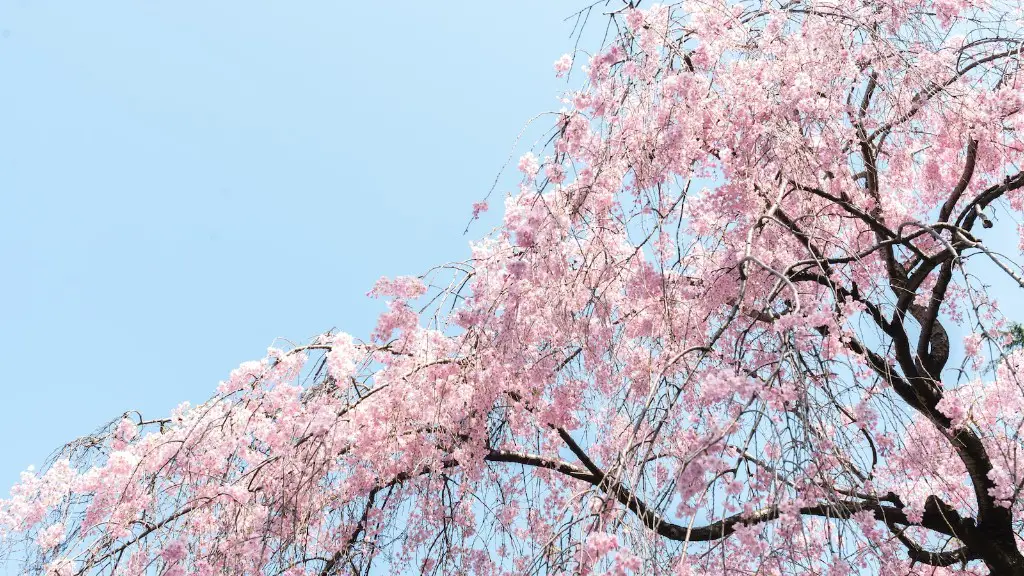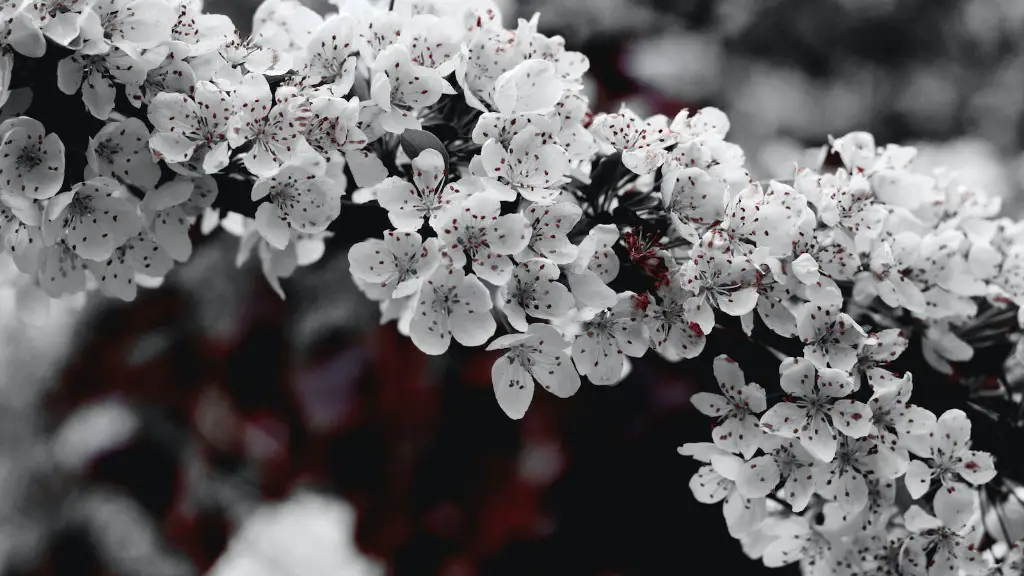Winter is an ideal time to prune an apple tree. Pruning an apple tree during the winter months ensures healthy and more abundant fruit during the summer months. To properly and safely prune an apple tree in winter, one should follow a few steps.
First, be sure to use the correct tools and safety equipment. Garden shears should be used to make the cuts, ideally with long handles to allow an easier reach. It is also important to wear gloves and safety glasses for protection.
Second, inspect the branches carefully. Look for any dead, diseased, or broken branches, and remove them and any shoots sprouting from the trunk. For any shoots larger than 5/8 inch in diameter, you may need to use a saw.
Third, plan where the cuts will be made. Make cuts away from the main branches in the direction of the angle of growth. Aim to cut at a 45-degree angle, leaving the longest possible spur from the newly pruned branch. Be sure to remove any stubs and shoots.
Fourth, make sure to thin out overcrowded branches. Thin out branches within the canopy by making clean cuts above a bud or branch, leaving enough space for other branches to grow.
Fifth, pay attention to the size of the cuts. It is important to avoid leaving wounds that are too large which can affect the overall health of the tree. If the cut is larger than one-fourth the diameter of the branch, the tree can become vulnerable to disease and fungal infestation.
Sixth, if necessary prune roots. If the roots are too close to the surface, remove them in order to prevent overcrowding. Take caution not to damage any other roots.
Seventh, mulch the tree. To ensure the tree has enough nutrients during winter months, secure some mulch around the coppice.
Maintaining an Apple Tree in Winter
After pruning an apple tree in winter, there are additional steps to ensure optimal fruit production during the summer season. These steps involve spacing, maintenance, and pest control.
Spacing is important to consider when planting or pruning an apple tree in winter. Apples trees need space to grow, so proper planning is essential. If trees are planted too close to each other canopy zones can merge, crowding the space and leading to weaker trunks and branches.
Maintenance is also a key factor. Regularly inspect the tree for growth conditions and disease, and prune accordingly. Too little pruning can create a weak tree whereas too much can hinder its ability to produce abundant fruit. It is also important to regularly monitor the tree for pests and act accordingly.
Finally, pest control is necessary to protect the apple tree. Some pests to lookout for include apple sawflies, pear blight, and bacterial apple fire blight. In order to combat these issues, practice proper pruning, use approved insecticides, and shun unsanitary pruning practices such as using a hedge trimmer. By taking precautions, you can protect your apple tree from various pests.
Winter Fertilizing
In order to ensure a healthy tree, fertilizing the apple tree in winter is an important step. The primary benefit of winter fertilization is to reduce the stress to the tree during the summer. Aside from reducing stress during high temperatures, winter fertilizing can improve the growth of the tree and maintain a healthier state.
When fertilizing an apple tree in winter, it is important to use the right type and amount of fertilizer. For apple trees, non-burning fertilizer should be used to avoid any plant damage, and in moderation. A good nutrient balance is most likely required, depending on the soil’s fertility and pH levels.
Inorganic fertilizers can be used but can be highly toxic and damaging to the tree. On the other hand, organic fertilizers are a safer option and are readily available in stores. When in doubt, always consult a local horticulturist. Additionally, an apple tree should be fertilized no more than twice a year; any more and the tree can become damaged.
When fertilizing, it is also important to consider the timing and quantity. Generally, fertilizing should not be done in the wet season, as the fertilizer can wash away with the rain water. Furthermore, too much fertilizer can cause undergrowth and in extreme cases, can even burn the roots of the tree.
Irrigation and Watering
Another way to ensure healthy fruit production during the summer months is proper irrigation and watering during the winter. Apple trees, unlike other fruit trees, require a lot of water; if not watered adequately, there is a risk of decreased blooming and delayed fruit set.
The two key concepts when it comes to irrigation and watering an apple tree in winter is timing and frequency. On average, apple trees require at least 1 to 1.5 inches of water a week, although they may require more depending on the soil type. During heavy rainfall, a decreased amount of water may be needed but regular checking should be done, in case the water has been soaked up by the soil or evaporation has taken place.
During the winter months, once a month is usually sufficient for irrigating an apple tree. However, during summer and spring, it is best to irrigate the tree twice a month or as needed. Additionally, soil moisture should be checked periodically by using a soil probe or a moisture meter to assess the moisture level.
When watering an apple tree in winter, it is important to remember to water the entire crown of the tree, which is the outermost part of the canopy. This is vital to ensure the tender blooms remain hydrated and do not dry out, which can lead to withering of the blooms and therefore, weakened fruit.
Winter Mulching
Lastly, winter mulching helps to protect the tree from cold temperatures and aids in moisture retention. The mulch will help to maintain the moisture levels in the ground and promote a healthy root system, whilst keeping the soil consistent in temperature.
When it comes to winter mulching, there are a few materials that can be used, such as straw, grass clippings, shredded bark, and pine needles. For an apple tree, straw is preferred because it rarely compacts, which allows oxygen to get into the soil and prevent the growth of weeds. Mulching is an important process that helps to produce healthier and more abundant fruit.
In conclusion, trimming an apple tree in winter is an important procedure that requires skill and precision. Adhering to the above steps of pruning, maintenance, pest control, fertilizing, watering, and mulching will ensure a healthy and more abundant fruit production during the summer months.




